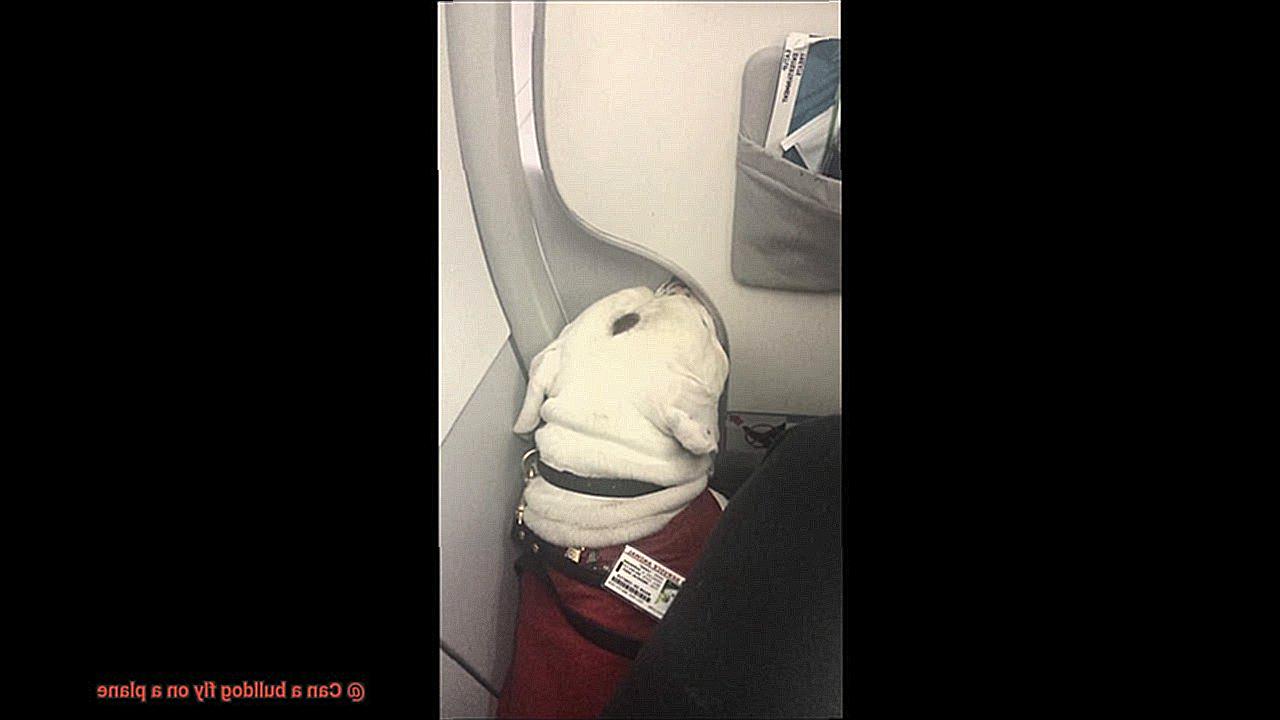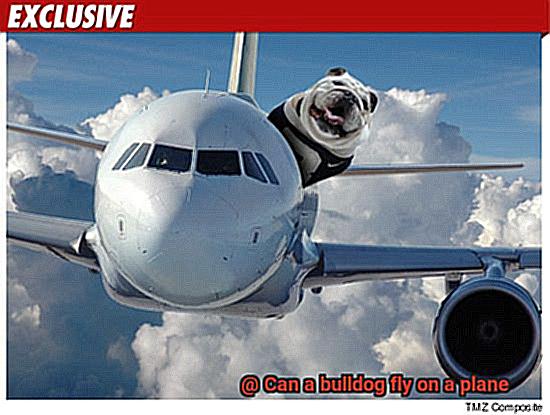Can a bulldog fly on a plane?
Picture this: you’re embarking on an exciting adventure, ready to explore new horizons. But what about your beloved bulldog? Can these stout, lovable creatures really soar through the skies with us?
The debate surrounding flying with bulldogs is as fierce as their tenacious spirit. Their sturdy frames, adorable wrinkles, and brachycephalic nature present unique challenges when it comes to taking flight. Yet, amidst these hurdles, recent advancements and evolving airline policies have sparked hope for bulldog owners everywhere.
In this captivating blog post, we’ll delve into the thrilling world of bulldog air travel. We’ll unravel the complexities and unveil potential solutions that define the feasibility of their airborne escapades. Join us as we navigate expert opinions, unravel airline restrictions, and discover the measures you can take to ensure a seamless journey for your beloved bulldog companion.
Get ready to spread your wings and discover whether your furry friend can truly conquer the skies.

Understanding Brachycephalic Breeds and Air Travel
Contents
- 1 Understanding Brachycephalic Breeds and Air Travel
- 2 Consulting the Airline Before Flying with a Bulldog
- 3 The Potential Risks of Flying with Bulldogs
- 4 When to Avoid Flying with Bulldogs
- 5 Tips for Making Air Travel Easier for Bulldogs
- 6 Acclimating Your Bulldog to the Carrier Before Flight
- 7 Avoiding Peak Travel Times and Extreme Weather Conditions
- 8 Alternative Transportation Options for Bulldogs
- 9 Conclusion
Brachycephalic breeds, such as Bulldogs, have unique characteristics that can pose challenges when it comes to air travel. Let’s delve into the topic and explore whether bulldogs can fly on a plane.
What makes brachycephalic breeds different?
Brachycephalic breeds are dogs with short, broad skulls and compressed faces. Bulldogs are a prime example of this breed type. Their narrowed nostrils, elongated soft palates, and smaller windpipes make it difficult for them to breathe properly, especially in stressful situations or environments with limited airflow.
The challenges of air travel for bulldogs
Air travel can exacerbate the breathing difficulties faced by brachycephalic dogs. The changes in air pressure and oxygen levels inside the cabin can be particularly problematic for their respiratory health. Additionally, the cargo hold of an airplane may not have adequate ventilation or temperature control, further compromising their well-being.
Airline restrictions and guidelines
Many airlines have specific guidelines and restrictions when it comes to flying with brachycephalic breeds. Some may even refuse to transport these dogs due to their higher risk of respiratory distress during flights. It is essential to consult both your veterinarian and the airline you plan to travel with to ensure that your bulldog is fit for air travel and meets all necessary requirements.
Precautions for flying with bulldogs

If air travel is unavoidable, there are several precautions you can take to minimize risks for your bulldog:
Hydration is key: Keep your bulldog hydrated throughout the journey by providing access to water.
Considerations before flying
While some bulldogs may be able to fly, others may have pre-existing respiratory conditions or other health concerns that make air travel risky. It is crucial to prioritize your dog’s well-being and listen to professional advice regarding their travel safety.
If flying is not feasible or advisable for your bulldog, exploring alternative transportation methods, such as traveling by car or train, may be a more suitable option. Always consult with your veterinarian and the airline for the most accurate and up-to-date information regarding flying with bulldogs.
Consulting the Airline Before Flying with a Bulldog
You’re planning to take your adorable French bulldog on a flight? Before you pack their favorite toys and treats, it’s essential to consult the airline to ensure a smooth and stress-free journey for both you and your furry friend. In this blog post, we’ll delve into the importance of consulting the airline before flying with a bulldog and provide you with all the necessary information to make your travel experience a breeze.
Know the Specific Policies:
Every airline has its own set of rules and regulations when it comes to pet travel. By consulting the airline beforehand, you can familiarize yourself with their specific policies regarding bulldogs. This will help you avoid any last-minute surprises or disappointments.
Breed Restrictions:
Due to their unique brachycephalic nature, some airlines may have specific restrictions on flying with bulldogs. These adorable flat-faced companions are prone to respiratory issues, especially in high-stress situations like air travel. Understanding these limitations will help you plan accordingly and explore alternative travel options if needed.
Cabin or Cargo Hold?
Consulting the airline allows you to determine whether your bulldog can travel in the cabin with you or needs to be transported in the cargo hold. Some airlines have restrictions on certain breeds flying in the cabin due to space constraints or safety concerns. Knowing this in advance will help you make suitable arrangements for your furry companion.
Weight and Size Limitations:
While most airlines allow pets in the cabin, they often have weight and size restrictions for pet carriers. Bulldogs come in various shapes and sizes, so it’s crucial to check if your pup meets the airline’s requirements. Knowing these limitations helps you select an appropriate carrier for a comfortable journey.
Required Documentation:
To ensure a hassle-free experience, consult the airline about any necessary documentation or paperwork required for traveling with a bulldog. This may include health certificates, vaccination records, or specific forms to be filled out before the flight. Being well-prepared with the necessary paperwork will save you from any last-minute stress or complications.
Climate Control and Handling Procedures:
If your bulldog needs to travel in the cargo hold, it’s essential to inquire about the airline’s climate-controlled areas and handling procedures. Bulldogs are sensitive to extreme temperatures, so ensuring a safe and comfortable environment for them is crucial during air travel. Ask the airline about any additional services or accommodations available to make their journey as stress-free as possible.
The Potential Risks of Flying with Bulldogs
Flying with your beloved French Bulldog can be a thrilling adventure, but it’s important to be aware of the potential risks and take necessary precautions to ensure their safety and well-being. Here are some key risks to consider:
- Respiratory Issues: Bulldogs, especially brachycephalic breeds like French Bulldogs, are known to have respiratory issues. Their short snouts and compressed airways make it difficult for them to breathe properly. The combination of high altitude, low cabin pressure, and temperature fluctuations in the airplane cabin can exacerbate these health issues, leading to discomfort and breathing difficulties for your furry friend.
- Stress and Anxiety: Bulldogs are sensitive creatures who thrive on routine and familiarity. The stress and anxiety of flying can take a toll on their mental and physical well-being. Being in an unfamiliar environment, surrounded by loud noises and confined spaces, can cause them distress. It’s important to provide them with reassurance and comfort during the journey.
- Limited Movement: The confined space in the airplane cabin may restrict your bulldog’s movement, making it difficult for them to find a comfortable position. This lack of mobility can increase the risk of muscle stiffness and discomfort during the flight.
- Deep Vein Thrombosis (DVT): Bulldogs, being a sedentary breed, have a higher risk of developing deep vein thrombosis (DVT). During long flights, where they are unable to move or stretch their legs, blood clots can form in their veins. It’s crucial to encourage movement and take breaks during layovers to minimize this risk.
- Airline Restrictions: Some airlines have specific regulations or limitations when it comes to flying with brachycephalic breeds like bulldogs. They may require additional documentation or have restrictions on the transportation of these breeds due to their health concerns. It’s essential to check with the airline beforehand to ensure compliance with their policies.
Considering these risks, it’s crucial to consult with a veterinarian before deciding to fly with your bulldog. They can assess your dog’s health condition and provide guidance on whether it is safe for them to travel by air. In some cases, alternative modes of transportation such as driving or using pet-friendly trains or ships may be more suitable for your furry friend.
When to Avoid Flying with Bulldogs
As an expert in bulldog travel, I understand the excitement of taking your furry friend with you on a flying adventure. However, it’s crucial to consider their unique needs and potential health risks associated with their breed. Here are some situations when it is advisable to avoid flying with a bulldog:
- Pre-existing respiratory issues: Bulldogs are already prone to breathing difficulties due to their brachycephalic anatomy. If your bulldog has any pre-existing respiratory conditions, such as tracheal collapse or laryngeal paralysis, flying can further exacerbate these problems. The stress and changes in air pressure during the flight can make it challenging for them to breathe properly.
- Overheating susceptibility: Bulldogs are also known for their susceptibility to overheating. The lack of proper ventilation in airplane cabins can increase the risk of heatstroke during flights, especially if the temperature inside the aircraft rises unexpectedly. The combination of stress, restricted airflow, and high temperatures can be dangerous for bulldogs.
- Elderly or underlying health conditions: If your bulldog is elderly or has underlying health conditions, it is crucial to consult with a veterinarian before making travel arrangements. They can assess your dog’s fitness for flying and provide guidance on how to ensure their safety and well-being during the journey.
- Airline policies: Not all airlines allow bulldogs or other brachycephalic breeds on their planes due to the potential health risks involved. It is essential to research and understand the specific policies of the airline you plan to fly with. Some airlines have restrictions or additional requirements for traveling with brachycephalic breeds.
- Comfort and safety: Even if an airline permits bulldogs on board, it is important to ensure that your dog meets all the necessary requirements for a safe and comfortable journey. This includes having a well-ventilated crate or carrier that allows them to move comfortably and providing appropriate cooling measures if needed.
Tips for Making Air Travel Easier for Bulldogs
Air travel can be a stressful experience for anyone, and that includes our furry friends like French Bulldogs. Bulldogs, with their flat faces and shortened airways, are considered brachycephalic breeds. This anatomy can make air travel more challenging for them as it can restrict their breathing and make them more prone to respiratory issues during the flight. But fear not. With a few tips and tricks, you can make air travel easier and more comfortable for your bulldog.
Consult with a veterinarian
Before embarking on any air travel with your bulldog, it is crucial to consult with a veterinarian. They will assess your dog’s overall health and determine if it is fit for air travel. They may also provide specific recommendations and advice based on your bulldog’s needs.
Choose the right airline
Not all airlines are created equal when it comes to flying with bulldogs. Some airlines have restrictions or specific policies regarding the transportation of brachycephalic breeds. Do your research and select an airline that allows bulldogs to fly and has appropriate guidelines in place to ensure their safety and well-being.
Book the right seat
When booking your flight, try to reserve a seat with extra legroom or consider purchasing a ticket for your bulldog in the cabin. This provides more space for them to stretch comfortably during the journey.
Crate selection
Choosing the right crate is vital for your bulldog’s air travel. Make sure the crate is IATA-approved, meaning it meets the International Air Transport Association’s standards for pet transportation. It should be well-ventilated, secure, and spacious enough for your bulldog to stand, turn around, and lie down comfortably.
Introduce the crate beforehand
Familiarize your bulldog with the crate before the flight. Gradually acclimate them to spending time in the crate and take short practice trips. This will help reduce anxiety during travel and make them feel more at ease.
Acclimating Your Bulldog to the Carrier Before Flight
Embarking on a flight with your French bulldog can be an exciting adventure, but it’s important to ensure their comfort and safety during the journey. One crucial step in preparing for the flight is acclimating your bulldog to the carrier. Here’s a comprehensive guide to help you through the process:
- Start Early: Begin the acclimation process well in advance of the flight to give your French bulldog enough time to adjust. This will help reduce anxiety and stress during travel.
- Positive Association: Introduce the carrier as a positive and safe space by placing treats, toys, and familiar items inside. This will help your bulldog associate the carrier with positive experiences.
- Gradual Increase: Gradually increase the amount of time your French bulldog spends inside the carrier. Start with short periods and gradually extend them. This will help them get used to being confined in a small space.
- Simulate the Experience: Take your French bulldog on short car rides inside the carrier to simulate the experience of being in an airplane. This will help them get accustomed to motion and vibrations.
- Positive Reinforcement: Use positive reinforcement techniques such as treats and praise to reward your bulldog for calm behavior while in the carrier. This will create a positive association with being inside the carrier.
- Practice Closing and Opening: Practice closing and opening the carrier door to familiarize your French bulldog with the sound and sensation. This will help them feel more comfortable when you need to secure the carrier for travel.
- Consult Professionals: If your French bulldog shows signs of anxiety or discomfort, consult with a veterinarian or professional dog trainer for guidance on how to address these issues. They can provide valuable advice tailored to your dog’s specific needs.
- Proper Sizing: Ensure that the carrier is properly sized for your French bulldog. It should allow them enough space to stand, turn around, and lie down comfortably. A carrier that is too small can cause discomfort and stress.
- Ventilation and Security: Consider using a carrier with good ventilation and secure closures to ensure your French bulldog’s safety during the flight. This will help provide adequate airflow and prevent any accidental escapes.
- Cleanliness Matters: Keep the carrier clean and free from any strong odors that could cause discomfort or stress to your French bulldog. Regularly clean the carrier before and after each use to maintain a hygienic environment.
- Remain Calm and Reassuring: Finally, remain calm and reassuring during the acclimation process. Your French bulldog can sense and respond to your emotions, so stay positive and patient throughout the training.
Avoiding Peak Travel Times and Extreme Weather Conditions
In this section, we’ll explore why it’s important to avoid peak travel times and extreme weather conditions when flying with your bulldog. By following these tips and guidelines, you can ensure a stress-free and enjoyable journey for both you and your furry friend.
Peak Travel Times: A Recipe for Chaos
During peak travel times, airports can become hectic and overcrowded, leading to long lines, delays, and increased stress levels for both you and your bulldog. To minimize these issues and make the experience more pleasant, it’s advisable to avoid flying during holidays, weekends, and other busy travel periods. Opting for off-peak times will not only provide a more relaxed environment but also reduce the risk of lost luggage or mishaps during transit.
Extreme Weather Conditions: Protecting Your Bulldog
French bulldogs are brachycephalic breeds, which means they have short noses and flat faces. Unfortunately, this anatomical structure makes them more susceptible to overheating and respiratory issues. Therefore, it’s crucial to check the weather forecast before planning your flight. Avoid flying during excessively hot or stormy conditions as it can pose significant risks to your bulldog’s well-being.
Airline Policies: Temperature Restrictions
Many airlines have specific temperature restrictions for pet travel, especially when it comes to brachycephalic breeds like French bulldogs. Some carriers may refuse to transport your bulldog if the temperature exceeds a certain limit. It’s essential to check with the airline about their specific policies regarding bulldog travel and temperature restrictions. By adhering to these guidelines, you can ensure that your furry friend is safe throughout the journey.
Destination Considerations: Climate Matters
When planning a trip with your bulldog, take into account the destination’s climate. If the location experiences extreme weather conditions or high temperatures, it may be best to reconsider traveling there with your furry friend altogether. Prioritizing your bulldog’s well-being over your desire to visit a particular destination is vital for responsible pet ownership.
Health Check-Up: A Must-Do Before Flying
Before flying, it’s highly recommended to take your bulldog for a thorough veterinary check-up. This will ensure that they are in good health and able to handle the stress of flying. Your vet can provide valuable advice and guidance, including any necessary vaccinations or medications that your bulldog may require during travel.
Alternative Transportation Options for Bulldogs
When it comes to getting around with your beloved bulldog, it’s important to consider their specific needs and unique anatomy. Flying may not be the best option for these brachycephalic breeds, but fear not. There are plenty of alternative transportation methods that can ensure their safety and well-being. Let’s explore some of these options:

Car Travel:
Bulldogs are generally more comfortable in a familiar environment, making car travel a popular choice. You’ll have more control over their surroundings and temperature, ensuring a stress-free journey. Just remember to provide proper ventilation by opening windows slightly or using a fan to regulate the temperature.
Train Travel:
All aboard. Many train companies allow pets on board, as long as they are kept in a carrier or crate. This can be a more relaxed and less stressful option for both you and your furry friend. Be sure to check with the train company about their pet policies and any specific requirements for traveling with a bulldog.
Ferry or Boat Travel:
If you’re planning a water adventure, consider traveling by ferry or boat. Many ferry companies have pet-friendly policies that allow dogs on board. However, do your research beforehand to confirm these policies and make sure your bulldog will be safe and comfortable during the journey.
Professional Pet Transportation Services:
For those who prefer a hands-off approach, hiring a professional pet transportation service might be the way to go. These services specialize in transporting pets safely and comfortably, handling all the logistics involved in travel, including paperwork and regulations.
Remember, regardless of the mode of transportation you choose, it’s essential to prioritize your bulldog’s well-being. Take frequent breaks during long car rides, provide necessary comforts like water and toys, and always ensure their safety by keeping them in a carrier or crate when required.
Conclusion
In conclusion, it is entirely possible for a bulldog to fly on a plane.
With the right preparations and accommodations, these adorable canines can safely travel in the skies. Bulldog owners must ensure that they adhere to airline regulations and guidelines to guarantee a smooth journey for their furry friends.
So next time you plan a trip with your beloved pooch, rest assured knowing that they too can soar through the clouds and experience the wonders of air travel.




